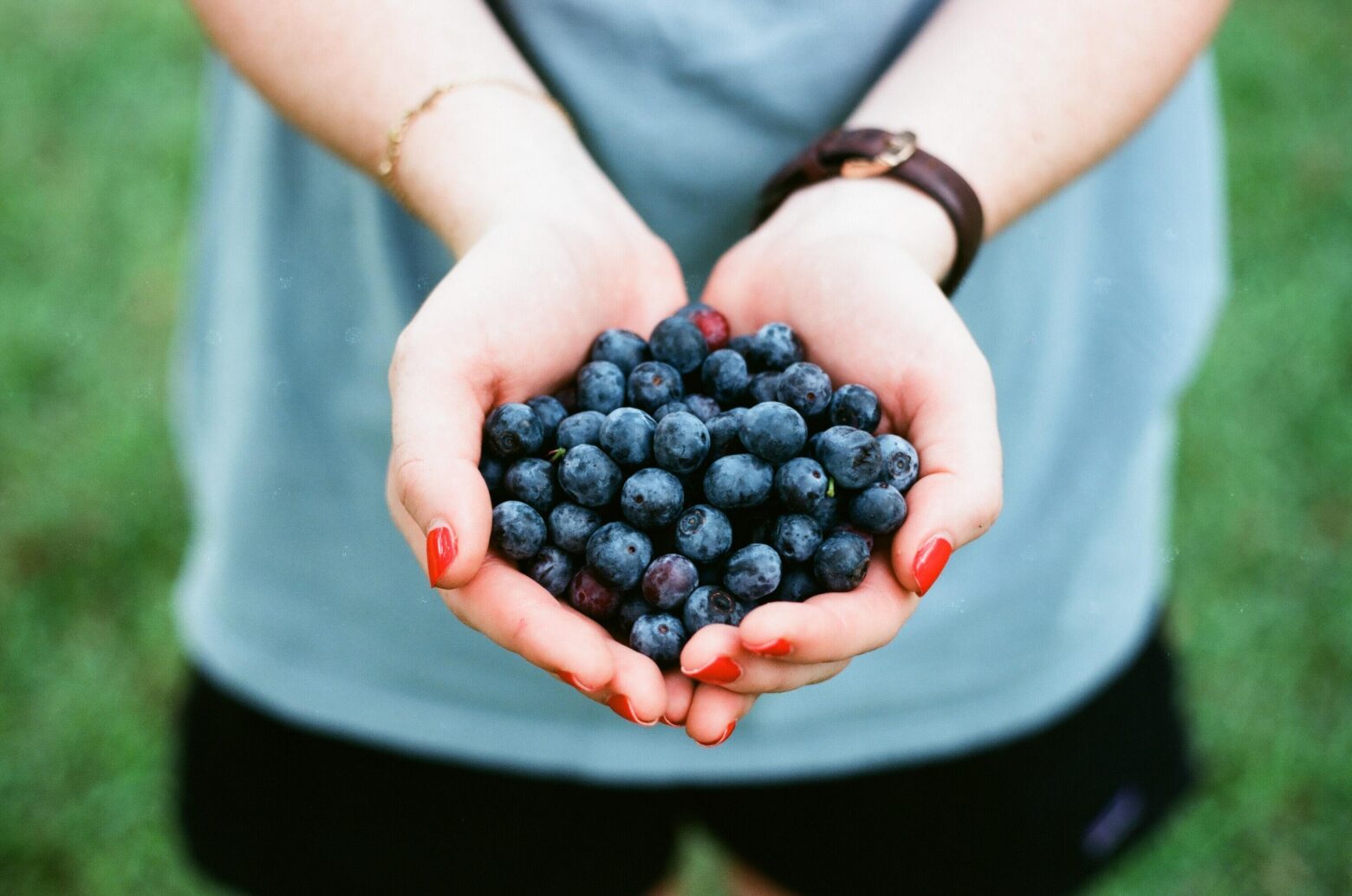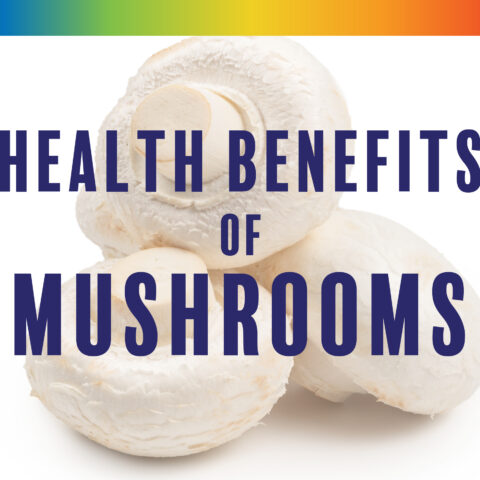Polyphenols: The Powerful Antioxidant You Didn’t Know You Needed

If you’ve heard of flavonoids and curcumin, then you know about polyphenols. These powerful plant-based antioxidants can help keep you healthy in a myriad of ways.
They can be found in abundance in Paleo foods, including certain fruits, vegetables, herbs, and even (to the delight of many) dark chocolate and red wine!
Here’s everything you need to know about polyphenols, including their health benefits, the best sources, and when you might want to consider a supplement.
What are polyphenols, and why are they healthy?
Polyphenols are powerful organic compounds characterized by multiple phenolic rings within their chemical structure; hence, poly (meaning “many”) and phenols.
These compounds are produced in plants as metabolites of other biochemical processes.[1] Plants use them as a defense against ultraviolet radiation, which causes cell damage, or a defense against attacks by pathogens such as viruses, bacteria, fungi, and parasites.
In short, polyphenols are antioxidants. They prevent the destruction caused by oxidation, which results from oxidative chemical free radicals that we inhale, consume, and absorb. [1,2,3] When we eat fruits and vegetables and other plants containing antioxidants, we impart and incorporate these helpful compounds into our own tissues and benefit from their support.
Plus, polyphenols appear to help reduce inflammation—a key factor in chronic illness and disease.[4]
Plant polyphenols are healthy compounds that are found in many types of fruits, vegetables, herbs, and tea. These powerful antioxidants can help improve brain health, digestion, blood sugar levels, and can even fight cancer and inflammation.
More than 8,000 plant-based polyphenols have been identified so far by scientists. [3,4] They play key roles in human nutrition by regulating metabolism, weight, disease, and the cell proliferation associated with cancers and the development of tumors. While we understand the short- and long-term health effects of some of the thousands of polyphenols, researchers have a long way to go to the understanding of all of them.
Types of polyphenols
Polyphenols include a diverse group of nutrients that fall into several groups.
Flavonoids are the most common polyphenol, and they account for about 60 percent of polyphenols. These compounds include quercitin, kaempferol, catechins, and anthrocyanins, which are mostly found in fruits.
Phenolic acids account for about 30 percent of polyphenols. These include stilbenes and lignins in vegetables.
Other types of polyphenols include polyphenolic amides, such as capsaicinoids in chili peppers, resveratrol and ellagic acid in grapes, wine, and berries; and curcumin in turmeric.
Best sources of polyphenols
Polyphenols are abundant in fruits and vegetables. Fruits like apples, berries, grapes, cherries, citrus, and peaches are great sources, and vegetables like asparagus, broccoli, carrots, red lettuce, onions, garlic, ginger, and spinach are loaded with them. [1,3,4,5,6,7]
Nuts and seeds are also great ways to get your fill of polyphenols, including almonds, pecans, walnuts, and hazelnuts. Don’t forget that cocoa powder and dark chocolate contain them as well! [1,3]
Herbs and spices are also great sources of nutrients, including polyphenols. Basil, marjoram, cinnamon, oregano, rosemary, thyme, sage, cumin, curry, peppermint, spearmint, chili pepper, and turmeric should all find a permanent place in your pantry. [3,8] Use them liberally to season your favorite meals in place of salt. Plus, a drizzle of olive oil will contain a healthy dose of polyphenols as well. [3]
If you want to drink your polyphenols, you can find them in coffee, red wine, and in black, green, and white teas. [3]
That said, some nutritional research suggests that overconsumption of polyphenols can be detrimental to health. Keep this in mind if and when you consider taking supplements, which have high concentrations of these compounds.
Why supplements might not be the best choice
As with most things in life, more isn’t always better.
Some nutritional research suggests that overconsumption of polyphenols can be detrimental to health. [9] Polyphenols are powerful chemical compounds that, in high quantities, could potentially overwhelm the body’s biochemical machinery and become toxic. Keep this in mind if and when you consider taking supplements, which have high concentrations of these compounds.
Whole foods contain many more nutrients than what we might target as beneficial ingredients. Compounds we never think about (or maybe have not yet studied in the laboratory) are found in all of the foods we eat and contribute to our health and well-being in ways that are difficult to imagine. Indeed, some nutrients work best in the presence of others. [3]
While supplementation may be wise for some people under certain circumstances (e.g., diagnosed absorption or production deficiencies for vitamin B12 or vitamin D), most of us will benefit optimally by meeting all of our nutritional requirements the old-fashioned way—by eating a well-balanced diet loaded with lean meats and seafood and lots of fresh fruits, nuts, and vegetables. [10] Always consult with your physician before committing to dietary supplements of any kind.
The bottom line
Plant polyphenols are healthy compounds that are found in many types of fruits, vegetables, herbs, and tea. These powerful antioxidants can help improve brain health, digestion, blood sugar levels, and can even fight cancer and inflammation.
For best results, be sure to eat a wide variety of fruits and vegetables so you can get the best protection from your diet as possible. While you may be tempted to supplement, keep in mind that supplements may provide a bigger dose than your body can handle. Eating a healthy, nutrient-dense whole food diet is always best.
References
[1] Pandey, K.B., and S.I. Rizvi. 2009. Plant polyphenols as dietary antioxidants in human health and disease. Oxidative Medicine and Longevity 2(5):270-278. https://www.ncbi.nlm.nih.gov/p…;
[2] Hughes, D.A. 2008. Dietary antioxidants and human immune function. Nutrition Bulletin. https://doi.org/10.1046/j.1467…;
[3] Petre, A. 2019. What are polyphenols? Types, benefits, and food sources. Healthline. https://www.healthline.com/nut…;
[4] Cory, H. et al. 2018. The role of polyphenols in human health and food systems: a mini-review. Frontiers in Nutrition. https://doi.org/10.3389/fnut.2…;
[5] Chen, S. et al. 2013. Evaluation of Garlic Cultivars for Polyphenolic Content and Antioxidant Properties. https://www.ncbi.nlm.nih.gov/p…;
[6] Porter, Y. 2012. Antioxidant properties of green broccoli and purple-sprouting broccoli under different cooking conditions. Bioscience Horizons: The International Journal of Student Research, vol. 5, hzs004 https://doi.org/10.1093/biohor…;
[7] Kulczynski, B. et al. 2016. Antiradical capacity and polyphenol composition of asparagus spears varieties cultivated under different sunlight conditions. Acta Sci. Pol. Technol. Aliment. 15(3):267-279. https://pubmed.ncbi.nlm.nih.go…;
[8] Brown, N., J.A. John, and F. Shahidi. 2019. Polyphenol composition and antioxidant potential of mint leaves. Food Production, Processing and Nutrition 1, 1. https://doi.org/10.1186/s43014…;
[9] Martin, K.R. and C.L. Appel. 2010. Polyphenols as dietary supplements: a double-edged sword. Nutrition and Dietary Supplements 2:1-12. https://www.dovepress.com/getf…;
[10] Cordain, L. 2011. The paleo diet: lose weight and get healthy by eating the foods you were designed to eat. John Wiley and Sons, New York. 266pp.
Bill Manci
Bill Manci is the president of a fisheries and aquaculture consulting company and he has worked with The Paleo Diet since 2002.
More About The Author




